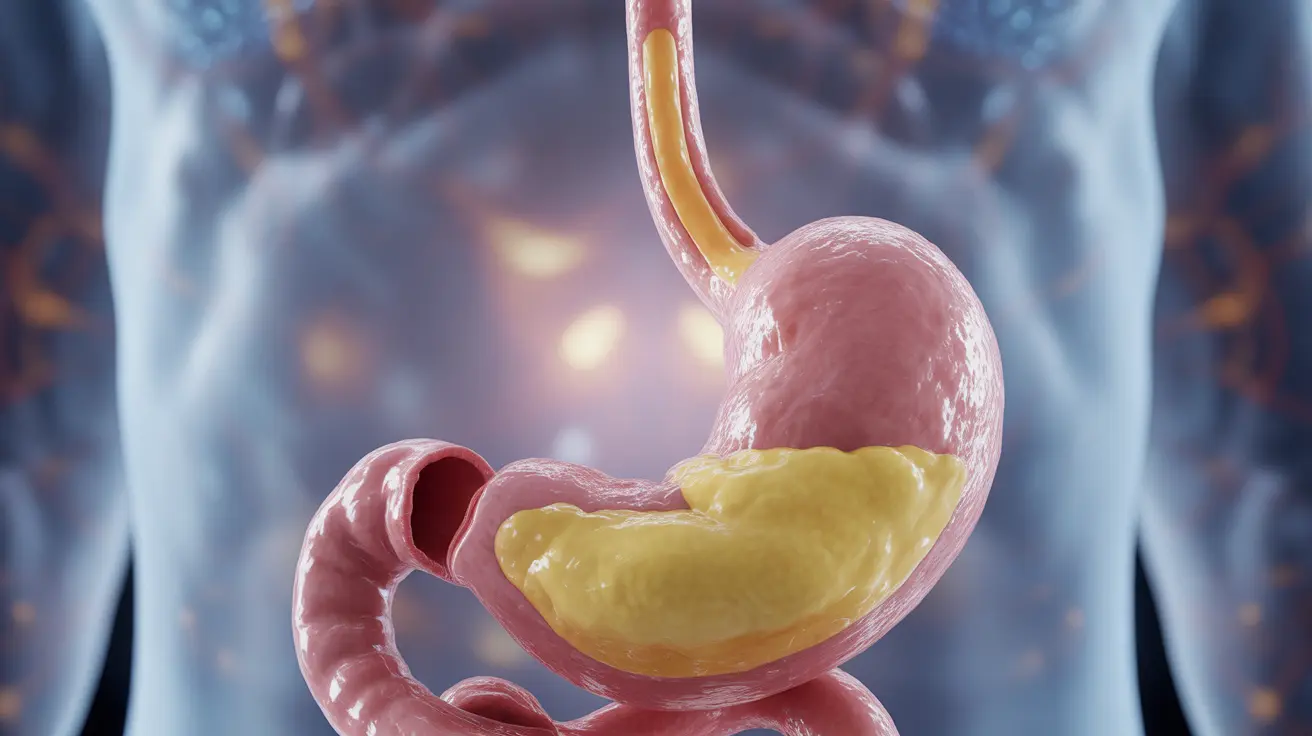Gastroesophageal reflux disease (GERD) attacks can be both frightening and uncomfortable, disrupting daily life and causing significant distress. These episodes occur when stomach acid flows back into the esophagus, leading to various symptoms that can range from mild discomfort to severe pain. Understanding how to recognize, manage, and prevent GERD attacks is crucial for maintaining your quality of life.
Whether you're experiencing GERD attacks for the first time or dealing with recurring episodes, this comprehensive guide will help you understand when to seek immediate medical attention and how to manage your symptoms effectively.
Recognizing GERD Attack Symptoms
GERD attacks typically present with several distinctive symptoms that can help you identify them:
- Burning sensation in the chest (heartburn)
- Sour or bitter taste in the mouth
- Difficulty swallowing
- Regurgitation of food or liquid
- Chest pain
- Chronic cough
- Feeling of food stuck in the throat
The intensity of these symptoms can vary significantly from person to person, and even between different episodes for the same individual. Some people may experience primarily heartburn, while others might have multiple symptoms simultaneously.
Distinguishing GERD from Heart Attacks
One of the most concerning aspects of GERD attacks is that their symptoms can sometimes mimic those of a heart attack. Here are key differences to help you distinguish between the two:
GERD Attack Characteristics
- Pain typically improves with antacids
- Often related to eating or lying down
- Usually accompanied by acid taste in mouth
- Pain generally concentrated in the chest area
Heart Attack Warning Signs
- Pain may radiate to arms, jaw, or back
- Often accompanied by shortness of breath
- May include cold sweats and nausea
- Can occur with physical exertion
Emergency Warning Signs
While most GERD attacks can be managed at home, certain symptoms warrant immediate medical attention:
- Severe, crushing chest pain
- Difficulty breathing or shortness of breath
- Jaw or arm pain
- Severe abdominal pain
- Vomiting blood or coffee-ground-like material
- Black, tarry stools
Treatment Options for GERD Attacks
Several treatment approaches can help manage GERD attacks effectively:
Immediate Relief Measures
- Over-the-counter antacids
- H2 blockers
- Proton pump inhibitors (PPIs)
Long-term Management
- Prescription medications
- Lifestyle modifications
- Regular medical follow-up
Prevention Strategies
Implementing certain lifestyle changes can significantly reduce the frequency and severity of GERD attacks:
- Maintain a healthy weight
- Eat smaller meals
- Avoid trigger foods
- Don't lie down for 2-3 hours after eating
- Elevate the head of your bed
- Wear loose-fitting clothes
- Quit smoking
- Limit alcohol consumption
Frequently Asked Questions
What are the common symptoms of a GERD attack and how can I recognize them?
Common symptoms include heartburn, chest pain, regurgitation, difficulty swallowing, and a sour taste in the mouth. These symptoms typically worsen after meals or when lying down, and may be accompanied by throat irritation or chronic cough.
How can I tell the difference between chest pain caused by a GERD attack and a heart attack?
GERD-related chest pain typically improves with antacids and is often related to eating or lying down. Heart attack pain usually radiates to other areas like the arm or jaw, and may be accompanied by shortness of breath and sweating. When in doubt, always seek emergency medical care.
When should a GERD attack be considered a medical emergency requiring immediate care?
Seek immediate medical attention if you experience severe chest pain, difficulty breathing, jaw or arm pain, vomiting blood, or black stools. These symptoms could indicate serious complications or other life-threatening conditions.
What treatment options are available to manage frequent or severe GERD attacks?
Treatment options include over-the-counter medications like antacids, H2 blockers, and PPIs, as well as prescription medications. For severe cases, your doctor might recommend additional treatments or procedures to strengthen the lower esophageal sphincter.
Can lifestyle changes or diet help prevent or reduce the risk of GERD attacks?
Yes, lifestyle modifications can significantly reduce GERD attacks. Key changes include maintaining a healthy weight, eating smaller meals, avoiding trigger foods, not lying down after eating, elevating the head of your bed, and quitting smoking.




